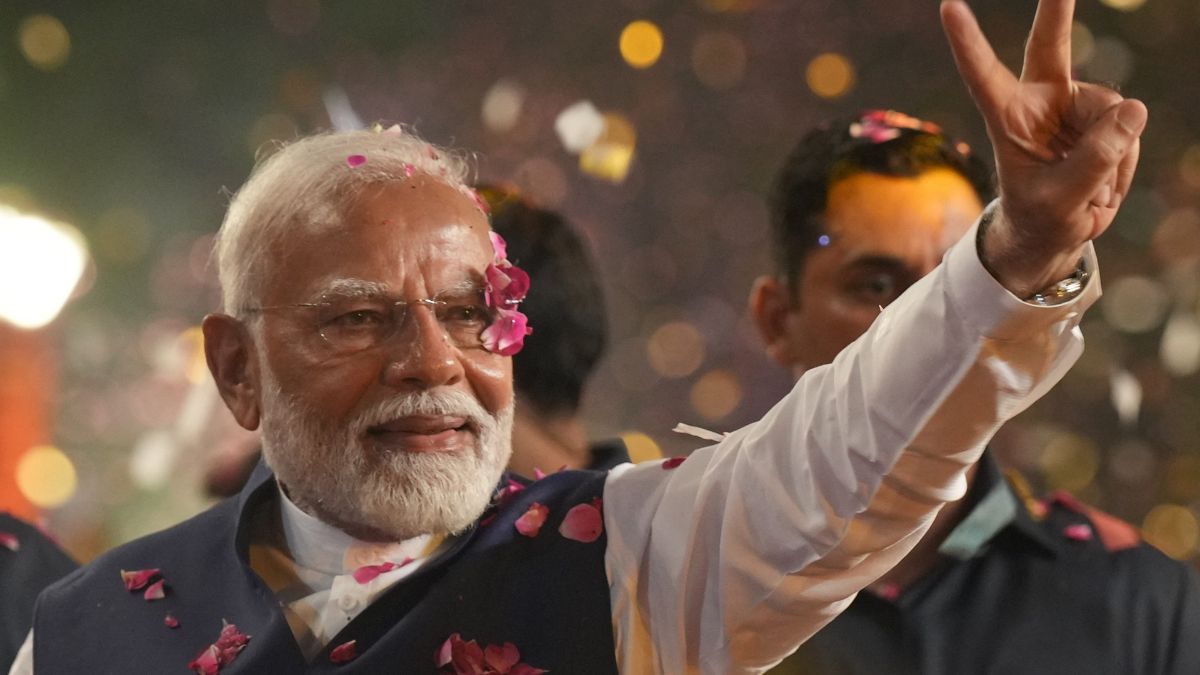Prime Minister Narendra Modi will complete 11 years in office on June 9. The National Democratic Alliance’s decade-long governance under PM Modi’s vision has been marked by development in both the political and economic landscape.
From policies that further prosperity to driving the economy to reach the fourth spot in the world, PM Modi has worked to make a name for India on the global stage through his ideas and actions in the past 11 years.
Here’s a look at how this change came to effect:
New building for Parliament
India has come a long way since the British left in 1947. However, their vestiges remain in the form of buildings and architecture across the country. For 73 years, lawmakers had to draft blueprints of India’s development in a British-made structure, that is, the old Parliament.
Under PM Modi, the central government changed this. In 2023, the prime minister inaugurated the new Parliament House of India, which now serves as a pillar of the country’s heritage.
The inauguration ceremony included traditional rituals such as a havan and the installation of the Sengol, a sacred sceptre, behind the Speaker’s chair in the Lok Sabha chamber.
Rise of BJP at the Centre and in states
PM Modi did not just help the Bharatiya Janata Party dominate the centre, but also paved the way for the party to expand its footprint across India.
The BJP, along with its ally parties, are now ruling 19 states and two union territories. The latest victory came during the Delhi Assembly Elections in February when the party dethroned the Aam Aadmi Party’s rule to make a comeback in the national capital.
This expansion of NDA governance marks a historic milestone, with the alliance now overseeing a population of approximately 920 million people, solidifying its dominance in India’s political landscape.
Impact Shorts
More ShortsEnd of the Congress-led political power
In 2014, a new age of politics was heralded in India. PM Modi’s BJP ended the Indian National Congress’s 10 years of rule under former prime minister Manmohan Singh. The Grand Old Party has ever since been the largest Opposition in India.
BJP has now emerged as India’s dominant political force, securing consecutive majorities in the 2014, 2019 and 2024 general elections.
This period marked a shift from a multi-party system to a more centralised political landscape, with the BJP consolidating support among various social groups, including rural voters, women, and marginalised communities.
In fact, PM Modi is the first prime minister after Jawaharlal Nehru to have won three consecutive parliamentary elections.
End of Article 370
In 2019, the central government took the bold step of abrogating Article 370 that gave Jammu and Kashmir its special status and split the region into two Union Territories – J&K and Ladakh.
The abrogation of Article 370 in August 2019 significantly transformed Jammu and Kashmir by integrating it fully into India’s constitutional framework. This move enabled the application of central laws, such as the Right to Education and land acquisition compensation statutes, which were previously inapplicable.
One nation, one tax
PM Modi revolutionised India’s taxation system by introducing ‘One Nation, One Tax’ that established the Goods and Services Tax (GST), which was implemented on July 1, 2017. This landmark reform unified the country’s complex tax structure by subsuming various central and state taxes into a single tax, aiming to simplify the taxation process and promote economic integration.
The GST was officially launched at midnight on June 30, 2017, with a special session held in the Central Hall of Parliament.
Finance Bill of 2017
In 0217, the central government under the BJP unveiled the Finance Bill, which is seen as a significant legislative measure introduced in India to implement the financial proposals of the administration.
It encompassed over 40 amendments across various laws, aiming to enhance transparency, curb black money, and streamline governance. Key provisions included making Aadhaar mandatory for filing income tax returns and obtaining a Permanent Account Number (PAN), imposing a cap of Rs 2 lakh on cash transactions to discourage unaccounted money, and removing caps on corporate donations to political parties while mandating anonymous contributions through electoral bonds.
The bill also helped to restructure several tribunals, granting the central government greater control over their functioning.
)